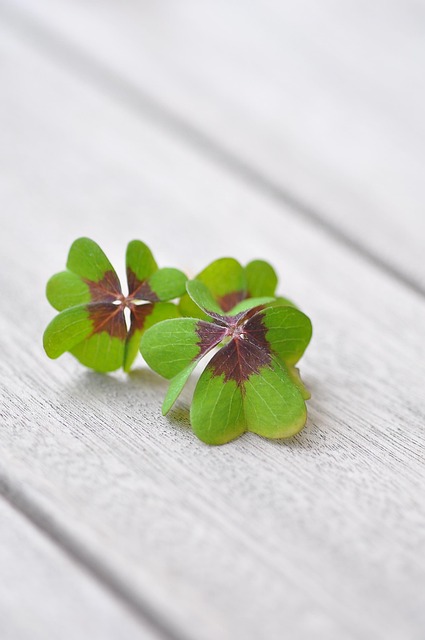The clover mite life cycle comprises egg, larva, nymph, and adult stages. Female mites lay eggs on grass or plants, leading to larvae feeding and molting into nymphs. Nymphs mature into winged adults that seek new hosts or mates. Understanding this cycle is key for effective management. Seasonal patterns show higher activity in warm months, prompting prevention services or professional extermination in winter. Preventive measures like inspections and maintenance disrupt the life cycle. Professional services offer residential treatment and commercial extermination using eco-friendly solutions for residual infestations.
Understanding the clover mite life cycle is key to effective management. Clover mites, despite their tiny size, can cause significant damage to lawns and landscapes. This article guides you through the intricacies of these pests, offering insights into their lifecycle, from eggs to adults, and how it varies with seasons. We explore comprehensive prevention strategies, including identifying breeding grounds and choosing plant varieties that deter them. For professional help, we delve into chemical treatments, alternative solutions, and eco-friendly options, ensuring your space remains mite-free with safe, effective methods.
Identifying the Clover Mite Life Cycle
Understanding the clover mite life cycle is a key step in effective management. This tiny pest goes through four distinct stages: egg, larva, nymph, and adult. The life cycle typically begins when adult mites lay eggs on suitable surfaces, often grass or plants in residential or commercial settings. From these eggs hatch larvae, which are mobile and feed on organic matter and plant debris. As they grow, the larvae molt several times before transforming into nymphs.
Nymphs resemble adults but are smaller and lack wings. They feed and develop until they finally mature into adult mites. The adult stage is when clover mites are most active, often seeking new hosts or mates. With proper identification of these stages, homeowners and businesses can turn to professional clover mite prevention services and eco-friendly treatments to manage infestations effectively. Professional clover mite removal specialists offer residential clover mite treatment and commercial clover mite extermination solutions, ensuring a safe and efficient environment.
– Recognizing life stages: egg, nymph, adult
Understanding the different life stages of clover mites is key to effective management and prevention. The life cycle begins with an egg stage, where females lay small, round eggs typically on grass blades or other plant surfaces. From these eggs, nymphs emerge, which are smaller versions of the adult mites, but lack wings. As nymphs grow, they molt several times before reaching the adult stage, characterized by their distinctive eight legs and wings, enabling them to move to new hosts or areas in search of food.
Recognizing these stages is crucial for both residential and commercial clover mite control. Professional clover mites removal services often employ eco-friendly solutions to manage infestations, ensuring that the treatment targets each life stage effectively. Whether it’s a minor infestation in a home garden or a widespread commercial problem, proper identification allows for tailored applications of clover mites pest control methods, leading to successful infestation treatment.
– Seasonal variations in population and activity
Clover mites exhibit distinct seasonal variations in their population and activity levels. These tiny pests are most active during warm months, typically from late spring to early fall. During this period, they proliferate rapidly, often reaching peak populations in summer. This is when homeowners and businesses are most likely to notice an infestation, prompting the need for effective clover mites prevention services or professional clover mites removal.
In colder seasons, their activity slows down significantly, with many species entering a state of diapause, a form of suspended animation that helps them survive harsh conditions. This makes winter an ideal time for commercial clover mites extermination, as populations are at their lowest. However, even during these dormant periods, eco-friendly clover mites solutions may still be required to manage residual infestations or prevent future outbreaks, especially in residential areas.
Clover Mite Prevention Strategies
Preventing a clover mite infestation is key to effective management, as proactive strategies can save homeowners and businesses from extensive treatments later. Regular maintenance and inspections are crucial in identifying potential entry points. Sealing gaps around doors, windows, and vents can deter adult mites from entering, disrupting their life cycle early on. Additionally, keeping grass cut short and removing debris around the property creates an unwelcoming environment for these pests, as they prefer long grass and hidden hiding places.
For existing infestations, seeking professional clover mites removal services is often the best course of action. Experienced pest control experts offer both residential and commercial clover mites treatment options, ensuring thorough extermination. They can also recommend suitable eco-friendly clover mites solutions, minimising potential harm to people and pets while effectively managing the infestation.
Understanding the clover mite life cycle is key to effective management. By recognizing the distinct egg, nymph, and adult stages, as well as seasonal variations in their population and activity, property owners and professionals alike can implement targeted strategies for prevention and control. Whether it’s through professional clover mites removal services, eco-friendly solutions, or residential and commercial clover mites treatment, a proactive approach ensures these pests don’t become an indelible part of your landscape. With the right knowledge and tactics, you can keep your spaces free from clover mite infestations, enhancing comfort and aesthetics.
